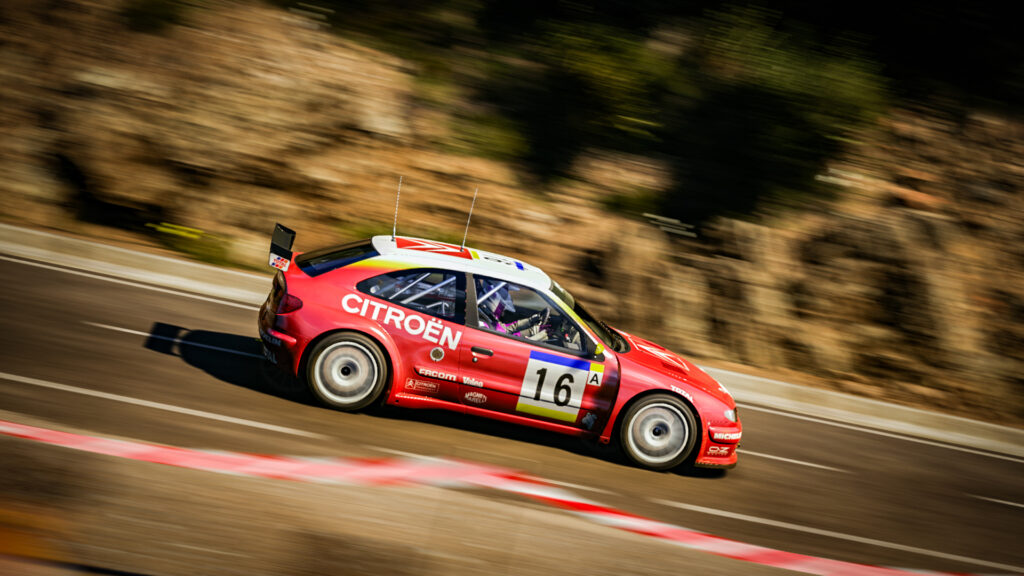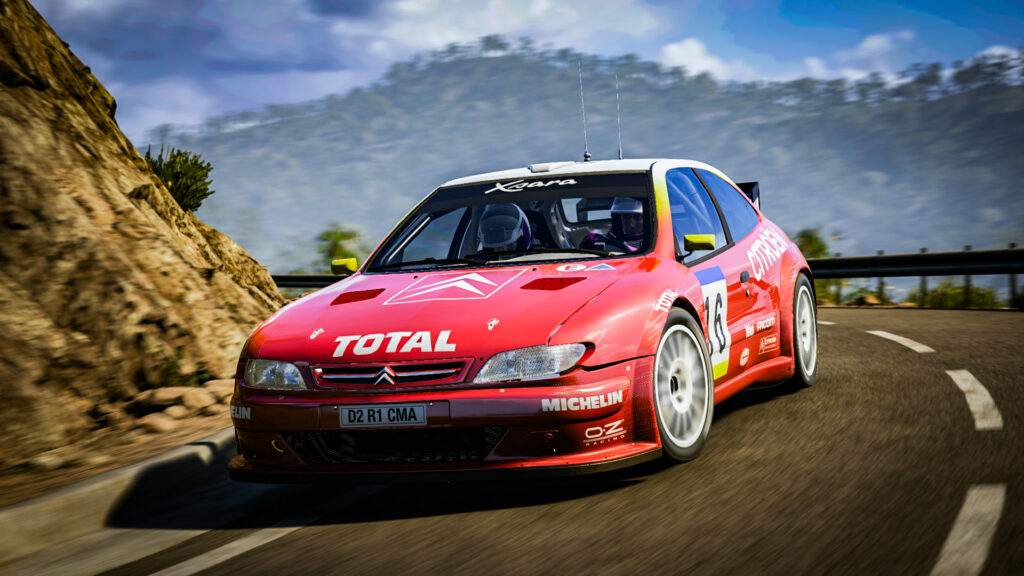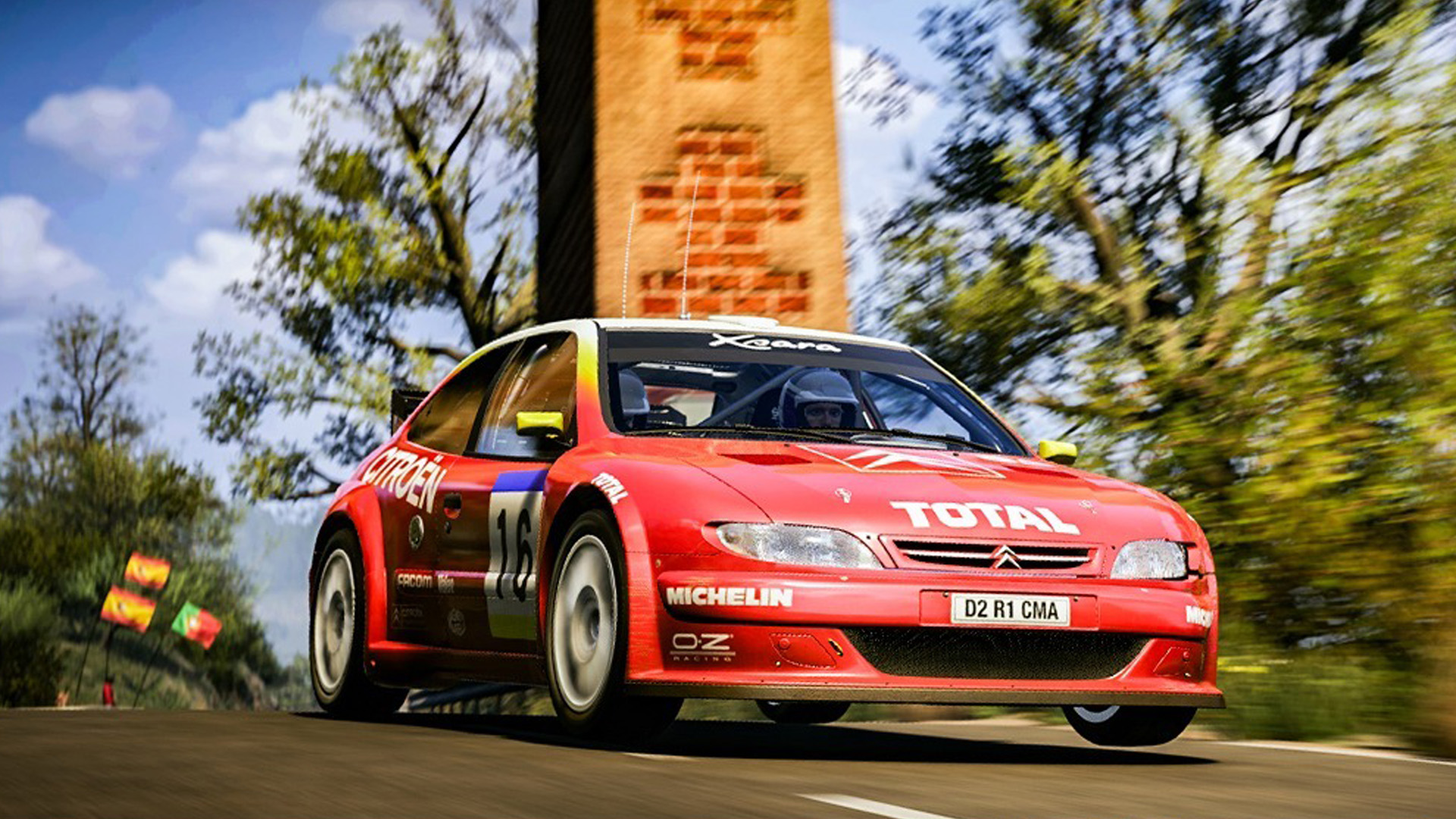Last month’s release of EA SPORTS WRC’s latest DLC, ‘Le Maestros’, has created plenty of clamour for the Citroen DS3 and Volkswagen Polo driven by World Rally Championship legends Sebastien Loeb and Sebastien Ogier respectively.
But there is one other WRC history maker in this bonus content that has created a stir amongst rally fans.
The inclusion of the plucky Citroen Xsara F2 Kit Car is a real gem. It’s a car that first made its appearance in the gaming world in V-Rally 2 back in 1999, before going on to grace the stages in Colin McRae Rally 3 and Gran Turismo 3 A-spec.
In the real world, it didn’t win a world championship and enjoyed only a very brief competition career from 1998-2001. So why should we get excited by this car I hear you ask?
Well, this car has a very unique real-life history and a successful David versus Goliath tale to tell. In simple terms, this is the last two-wheel drive car to win a WRC event outright.
Its achievement arrived a full 16 years after the famous Lancia 037 became the last two-wheel drive car to win the WRC manufacturers crown.
That was supposed to be the last hurrah, with two-wheel drive machinery seemingly consigned to the history books as four-wheel drive machines, led by the monstrous Audi Quattro soon became the norm in the championship.
So cast your mind back to 1999. A time when the original PlayStation was just about to be superseded by its successor the PlayStation 2, while Sega’s offering, the Dreamcast, was about to hit the shelves.
At the dawn of the new millennium the WRC was enjoying a popularity boom, no doubt helped by the overwhelming success of the original Colin McRae Rally game, released the previous year. No less than seven manufacturers (Mitsubishi, Subaru, Ford, Toyota, Peugeot, SEAT and Skoda) were competing for top honours with expertly honed four-wheel drive machines.
The cast list included McRae, Tommi Makinen (Mitsubishi), Richard Burns (Subaru), Carlos Sainz (Toyota), Didier Auriol (Toyota), Juha Kankkunen and Marcus Gronholm creating a formidable lineup of world champions present and future.

However, this group piloting their 300-horsepower four-wheel drive machines couldn’t deny the upstart Citroen driven by Frenchman Philippe Bugalski from taking not one, but two, outright WRC victories.
The Xsara kit car was never meant to take on the WRC big boys. The car was Citroen’s offering to cater for the FIA F2 support class regulations (1993-1999). The rules permitted manufacturers to homologate two-wheel drive, naturally aspirated, two-litre, front-engined cars. It spawned such modified high-revving pocket rockets as the SEAT Ibiza, Renault Megane Maxi, Peugeot 306 Maxi, Ford Escort Maxi, Vauxhall Astra and Volkswagen Golf, that all feature in EA WRC.
But it is the Xsara that lit up the rallying world on a global stage in the most spectacular fashion.
These wider and lighter F2 cars would lag behind their four-wheel drive turbo-charged counterparts on loose surfaces, but they proved to be absolute weapons on asphalt rallies, capable of matching the elite.
The prospect of a possible upset first reared its head when former Renault factory driver Bugalski won six of 10 rallies to lift the 1998 French Rally Championship (an all-Tarmac affair), and the following year he would win nine out of 10.
The first warning signs to the WRC arrived in 1997 when Gilles Panizzi piloted a Peugeot 306 Maxi to third outright in Catalunya and the Tour de Corse. Two years later Bugalski and Citroen surpassed that achievement by shocking the WRC establishment with back-to-back outright wins at those asphalt events.
It was the first overall win for a two-wheel drive car in the WRC since Alain
Oreille took a Renault 5 Turbo to victory in 1989’s Ivory Coast event.
But in Spain, a decade later, two-wheel drive was back on the top step of the podium. Citroen held a 1-2 at the end of the first leg with Jesus Puras heading Bugalski. But it was the latter that came out on top to take a stunning win by 31.8s from 1994 world champion and factory Toyota driver Auriol with
Mitsubishi’s Makinen a distant third more than two minutes adrift.
At the following round in Corsica, Citroen really upset the applecart as Bugalski headed an incredible 1-2 from Puras, 34.7s behind, with Sainz the best of the WRC top flight in third, more than a minute in arrears.
This was the climax of the F2 kit car era as the FIA stepped in to rewrite the rules to avoid the top-flight WRC cars being embarrassed.

But Bugalski, who sadly died aged 49 in 2012, will never be forgotten and neither will the Xsara Kit Car. The famous back-to-back wins were even included in the WRC’s 50 greatest moments when the series celebrated its half-century in 2023.
Fast forward to the present and this Xsara has been reborn in the virtual world thanks to EA SPORTS WRC. Its responsive handling and iconic F2 engine noise perfectly recreated, make it a joy to drive.
So next time you are perusing the extensive car list in the game, spare a thought for a true unsung WRC hero.





Chat with the Community
Sign Up To CommentIt's completely Free